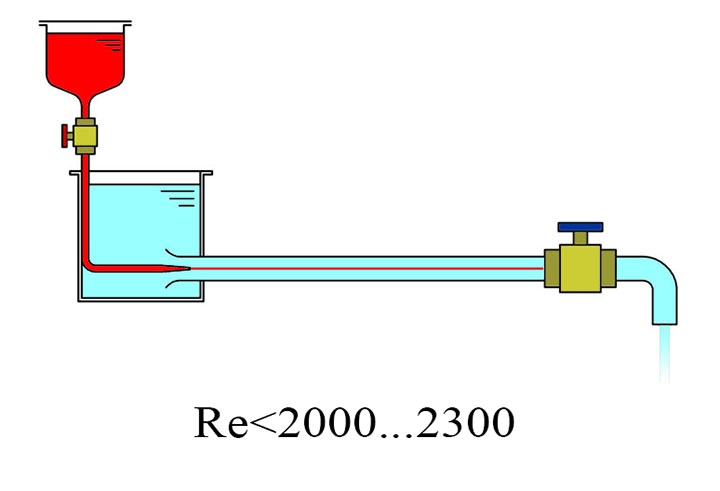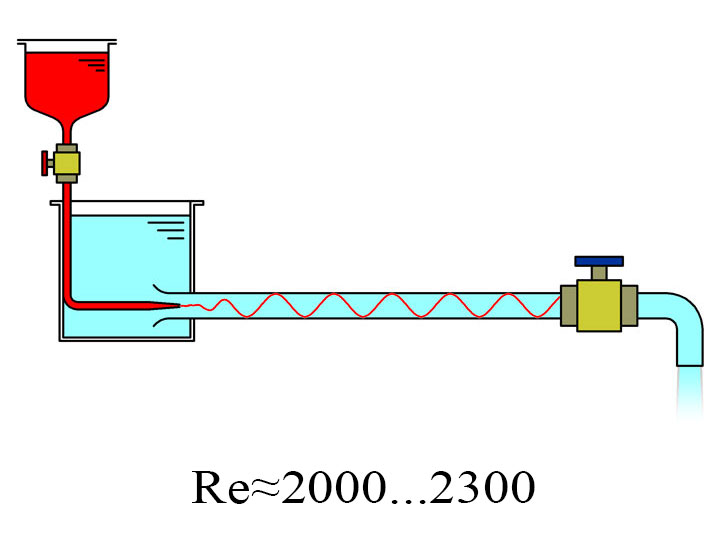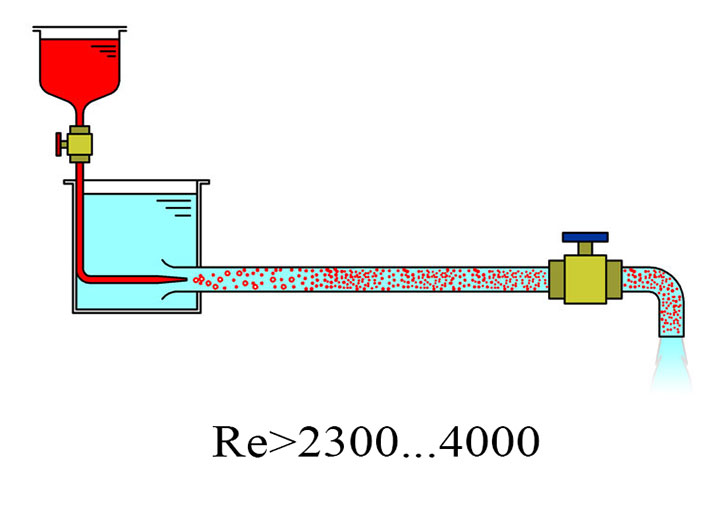Types of flow
The type of flow is an important factor when considering energy loss within a hydraulic circuit.
There are two different types of flow:
- Laminar flow;
- Turbulent flow.
The type of flow may be determined using Reynolds number.
Reynolds number is dependent on the velocity of flow, viscositi of a liquid and on the cross-sectional area throught which flow occurs.
Laminar flow
Up to a certain velocity, friction forces dominate, the Reynolds number is small. Liquid move along pipes in layers. The inner-most liquid layer at the pipe surface does not move. The outer-most liquid layer at the pipe surface does no movie.

Laminar flow occurs for Re<2300.
Turbulent flow
If the velocity of flow is increased, inertial forces begin to increase in the flow, at the critical velocity the type of flow changes from laminar to turbulent.

When inertia forces dominate the flow, the flow becomes whirling. The flow resistance increases and thus the hydraulic losses increase. This is the turbulent flow.

Turbulent flow is not usually desirable, because the hydraulic losses increase.
Turbulent flow occurs for Re>2300.